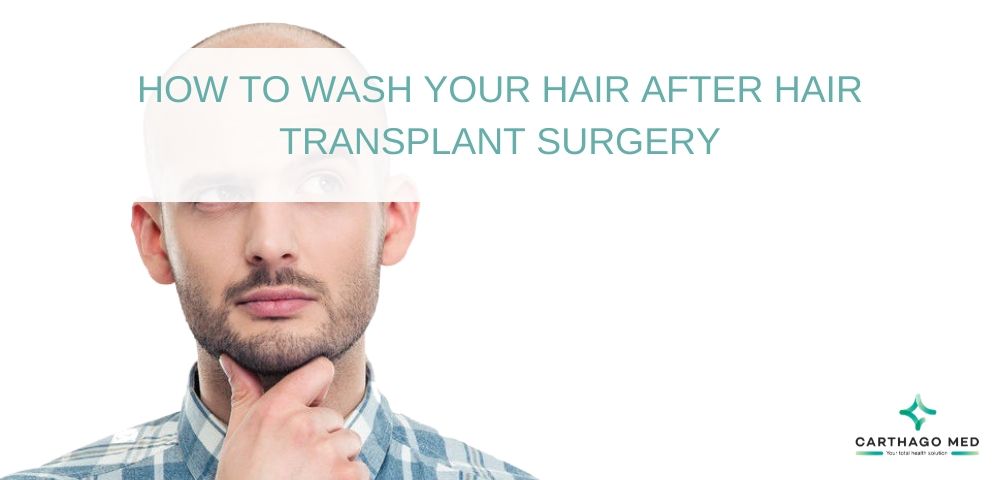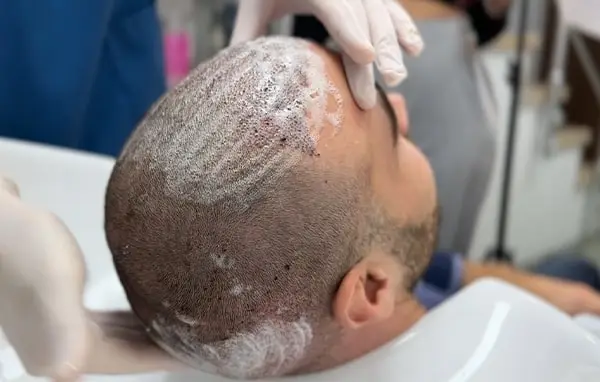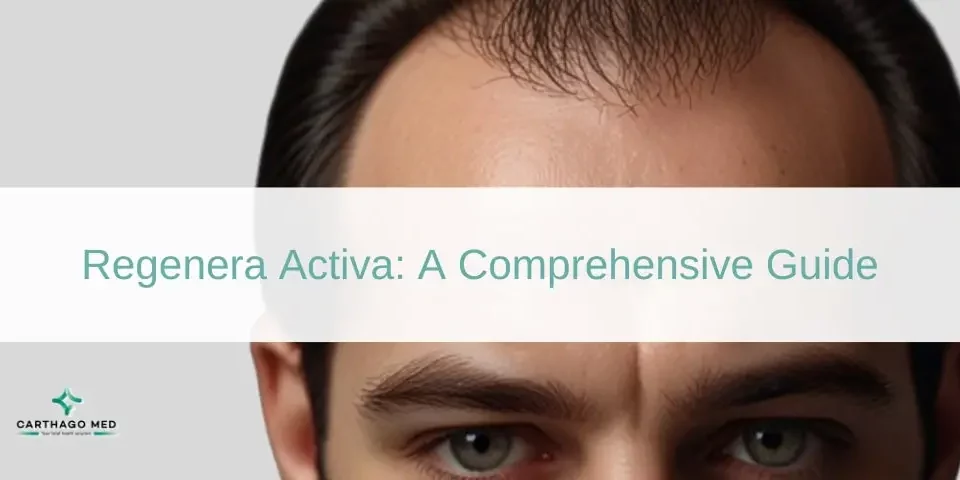
How to wash your hair after hair transplant surgery?
Hair transplant surgery is a life-changing procedure that can restore your confidence and give you a full head of hair. However, the success of the surgery depends not only on the procedure itself but also on how well you take care of your hair afterward. Proper post-operative care is crucial to ensure that your transplanted hair grows healthy and strong. Among the several recommendations to follow is washing your hair after the surgery: how will you do that?
Why does proper hair washing matter?
After having a hair transplant, it’s important to be mindful of the immediate and short-term effects of the procedure.
Directly after the transplant, for example, your scalp will often be particularly sensitive to being touched. Therefore, to avoid damaging the hair roots, you should avoid touching or wetting this area for at least three days.
Learning how to wash your hair properly can be vital to preventing damage and ensuring your transplant is successful. Not only that, it also ensures that the transplanted area is kept clean, reducing the risk of any unexpected complications, scarring, or infections.
Understanding which types of products you should be using or avoiding can also make a big difference to the overall health and quality of your transplanted hair grafts.
When can you wash your hair after a hair transplant?
Timing the first post-transplant hair wash is a crucial step in the recovery process.
While different clinics may have varying recommendations, at The Treatment Rooms London, we suggest that your first hair wash with your fingers or palms should be on day 5 following your surgery (with the surgery day being day 1). This timeframe allows the transplanted hair roots to become suitably anchored in place.
However, since everyone’s circumstances are unique, your surgeon will be able to advise you on when you should plan for your initial post-transplant hair wash.
What are the benefits of washing your hair after a hair transplantation?
After having had recourse to hair transplant surgery, the patient will notice the formation of scabs on their scalp. These scabs, which come in the shape of brown marks, act as a natural protection that covers open wounds on the skin; especially after a hair restoration surgery where many small incisions are made. These cause bleeding which leads to the subsequent formation of scabs. Among the benefits of hair washing is eliminating accumulated scabs in the hair. It is, however, important to note that scabs can also cause a loss in transplanted hairs. This is quite expected, so no need to worry if it occurs. Hair cleaning will also help protect your scalp from potential infections and promote hair growth.

Preparing for the first hair wash
To prepare for your first hair wash after a transplant, it's important to have a few essential items and supplies readily accessible:
- A low-pressure water source: It's crucial to be gentle during your initial hair wash, so ensure you have a shower head with a low-pressure setting or use cups to gently pour water over your head.
- A gentle shampoo: This should ideally be provided as part of your aftercare package, accompanied by detailed instructions from your surgeon on its effective use during the recovery process.
What is the recommended timeline for washing your hair after a hair transplant?
Day 1 - Post Hair Transplant
On the first day after your hair transplant surgery, your head will be covered in dressings. It's crucial not to wash your head during this period to allow the wounds to heal properly. Instead, you should use a saline spray every 30-45 minutes to keep the wounds clean and gently massage your forehead at the same intervals. This helps promote blood circulation and reduce swelling.
Days 2 and 3 - Recovery Process
On the second day, you can remove the bandages from the donor area. However, continue to be cautious and avoid disturbing the grafts. Wash the donor area with baby shampoo and follow the same saline spray and forehead massage routine. This helps maintain a clean and healthy scalp.
Day 4 - Continuing Care
On day 4, you should continue to wash the donor area without disturbing the grafts. You can now discontinue the use of saline spray, and regular forehead massages are no longer necessary.
Day 5 Onwards - Washing the Entire Head
Starting from day 5, you can begin washing your entire head with baby shampoo. Here's how:
Pour baby shampoo into your hands and create a lather. To properly cleanse your hair, begin by applying the shampoo to your head using the palms of your hands, taking care to avoid any vigorous rubbing or massaging of the scalp. Afterward, make sure to rinse your hair thoroughly until no traces of soap remain, ensuring that all the shampoo is completely washed out. Lastly, for the best results and to maintain the health of your hair, allow it to air-dry naturally without the use of excessive heat or styling tools.
10 Days After Hair Transplant
Ten days after your hair transplant, you should have already removed the bandages from the donor area (the back of your head). During this time, it's essential to be gentle when washing your hair and to avoid disturbing the grafts. Use a mild, baby shampoo to cleanse the donor area without rubbing or massaging your scalp. Rinse thoroughly with warm water and allow your hair to air dry naturally.
Day 14 - Returning to Normal Routine
After 14 days, you can resume your normal hair care routine. You can wash your hair as you did before the hair transplant, ensuring that you are gentle and avoid any aggressive scrubbing or rubbing.
How to Wash your Hair after a Hair Transplant?
Washing your hair after a hair transplant is a delicate process that requires attention to detail to avoid pulling out transplanted hair or causing pain and bleeding. Proper washing is essential to reduce the risk of infection and to remove scabs, blood, and crusts from the scalp. When washing only the donor area of your head, it's important to follow a specific procedure to maintain the health and success of your hair transplant. Begin by filling a cup with warm water and adding a few drops of baby shampoo to create a soapy solution. Next, gently pour the soapy water onto your hair, ensuring it covers the transplanted area. Be cautious not to rub too vigorously to avoid dislodging any transplanted hairs, and refrain from picking at any scabs that may be present. After gently cleansing the area, fill another cup with warm water and use it to rinse the donor area thoroughly until no traces of soap remain. Finally, allow your hair to air dry completely. Adhering to this meticulous washing routine is crucial in ensuring the ongoing health and ultimate success of your hair transplant.
proper aftercare, including washing your hair correctly, is crucial for the success of your hair transplant surgery. Following the provided timeline and using gentle, appropriate products like baby shampoo and saline spray will help protect your transplanted hair and promote optimal healing. Remember to be patient, and by day 14, you can return to your normal hair care routine with a newfound sense of confidence in your appearance. Your journey to a full head of hair begins with the right post-transplant care.









